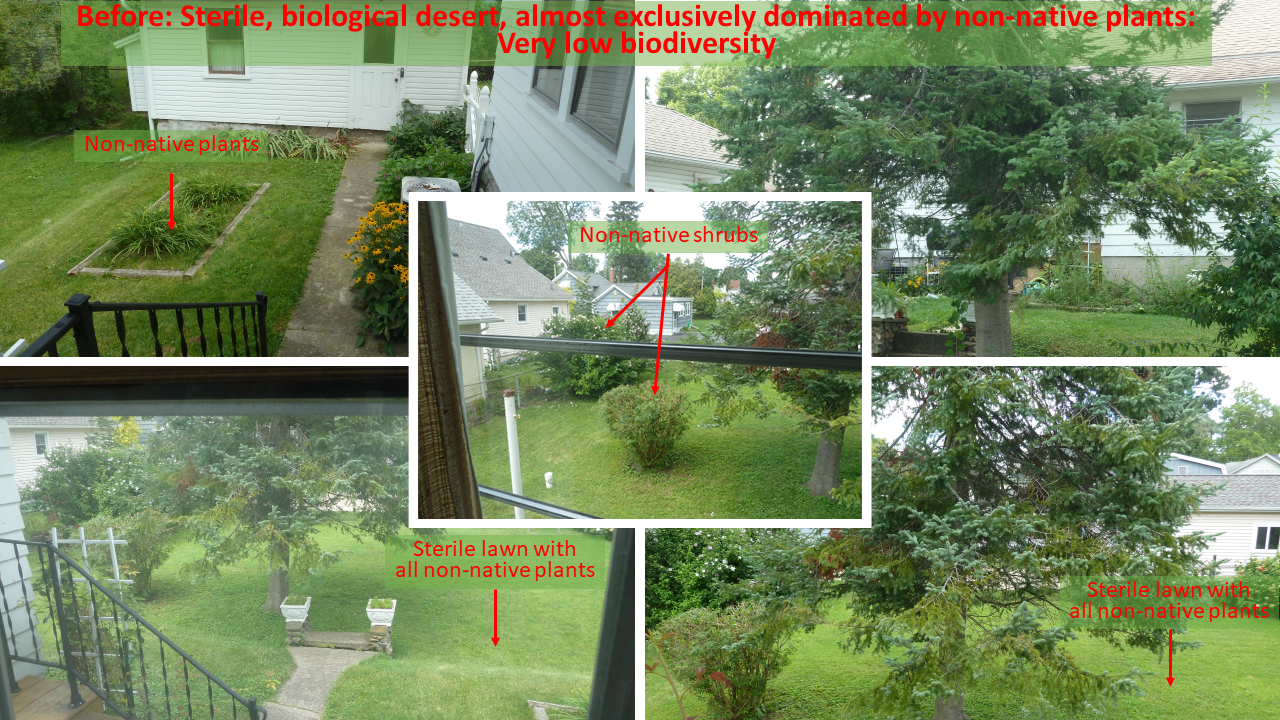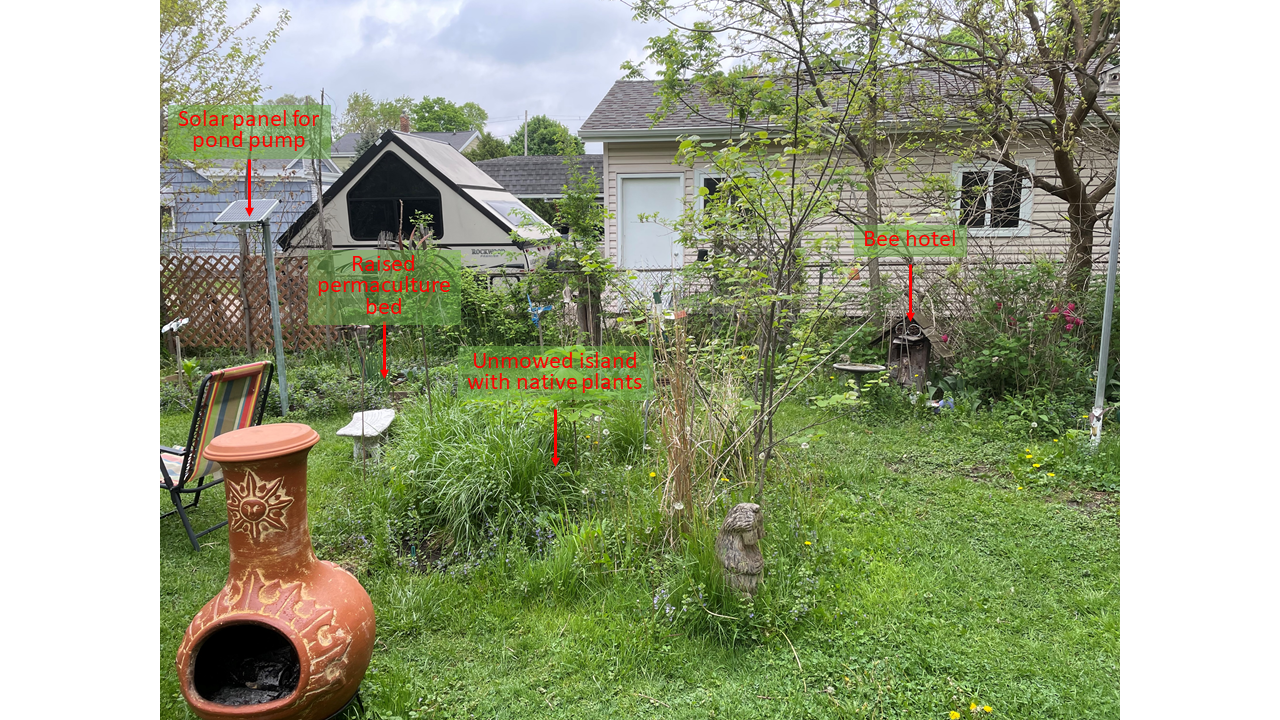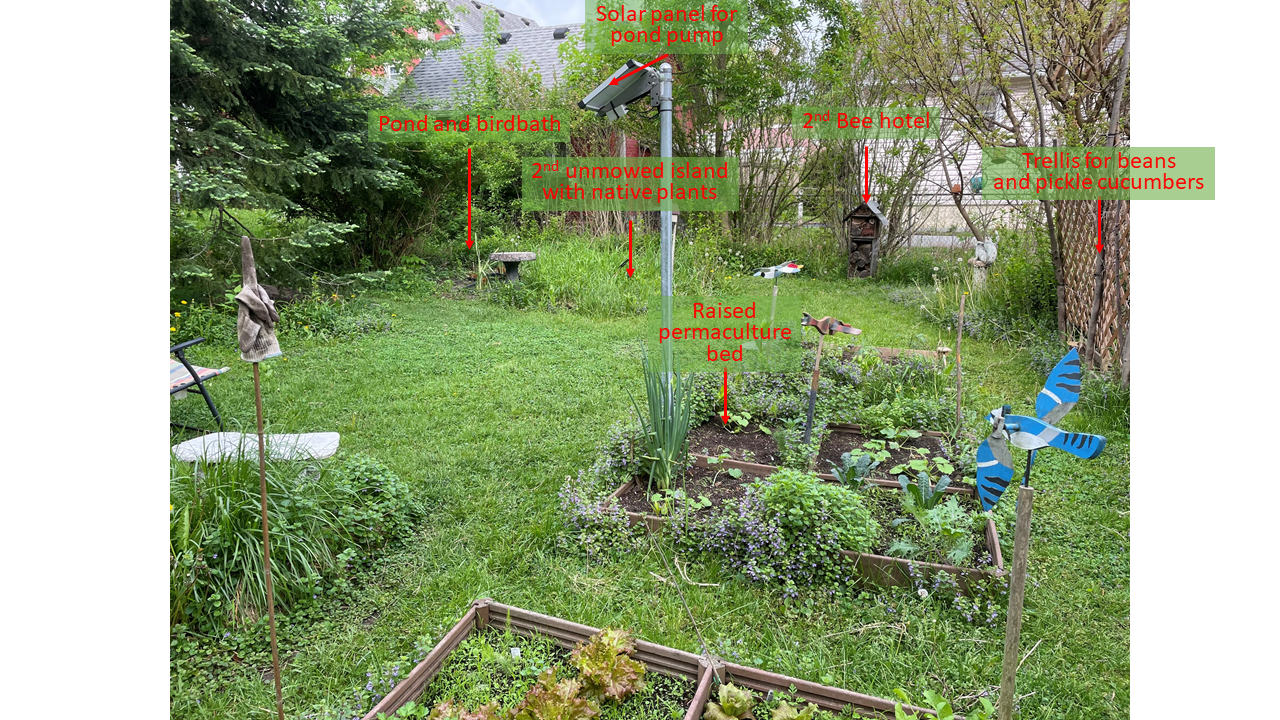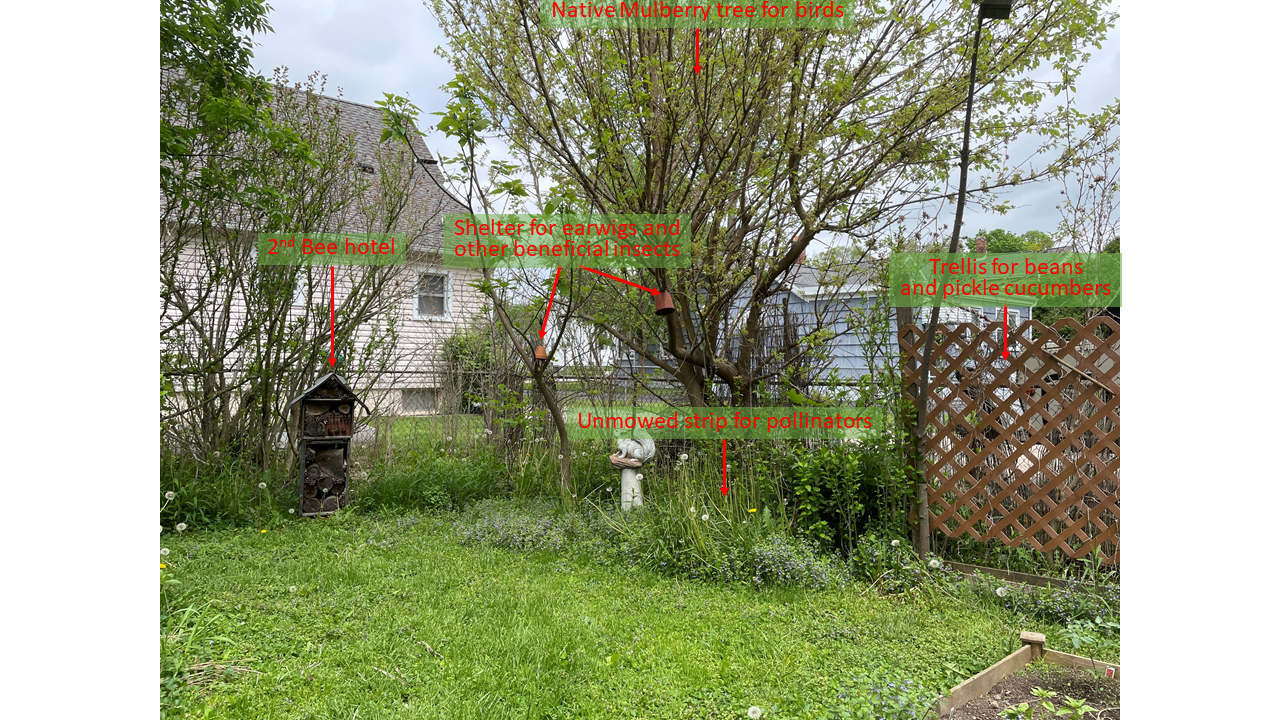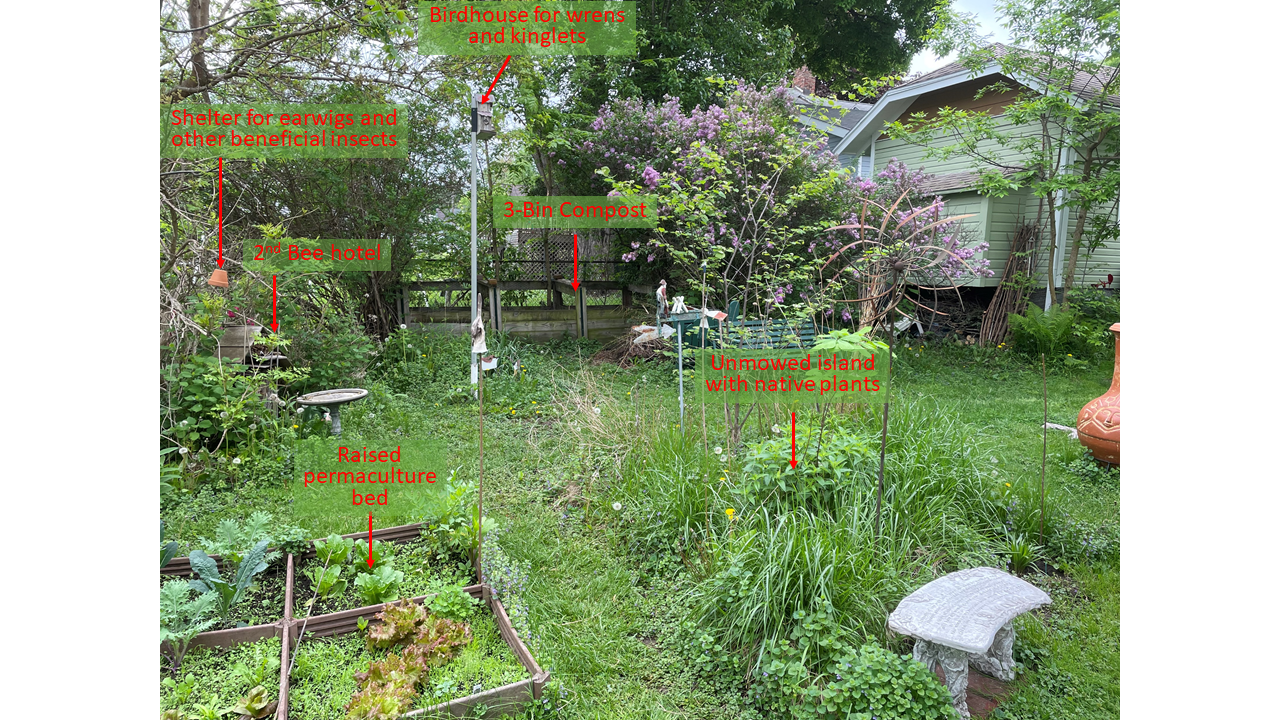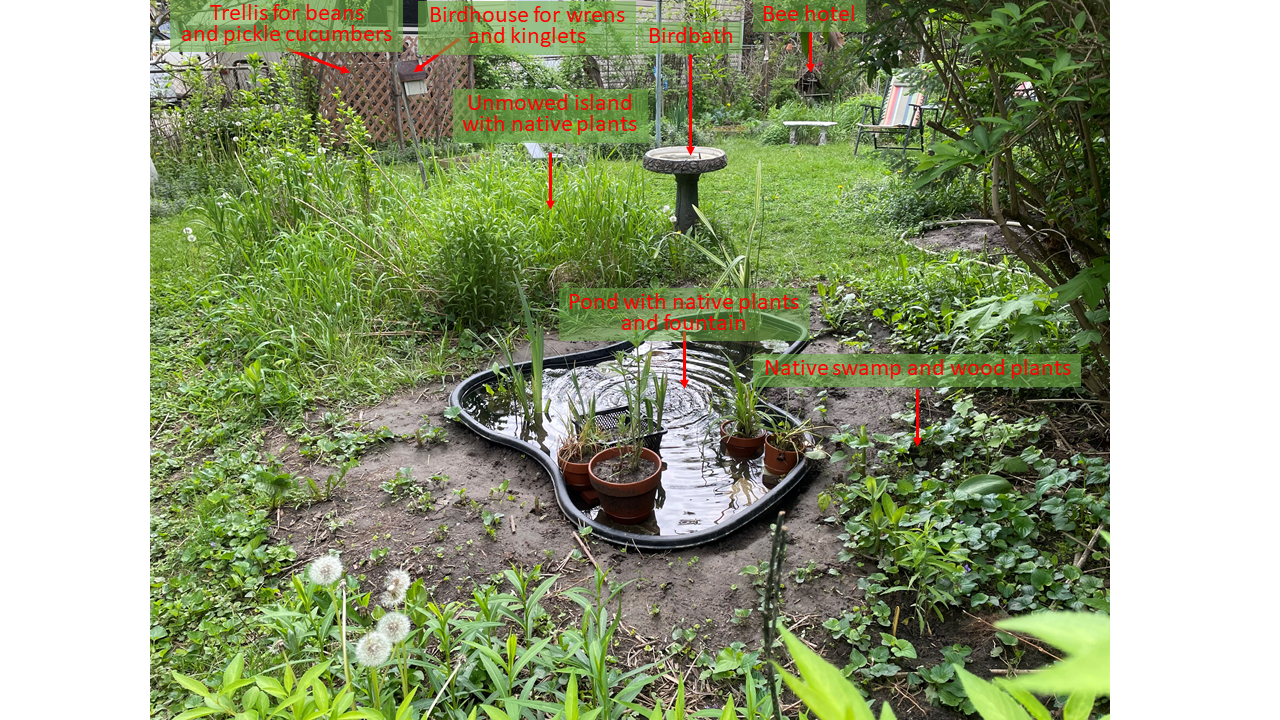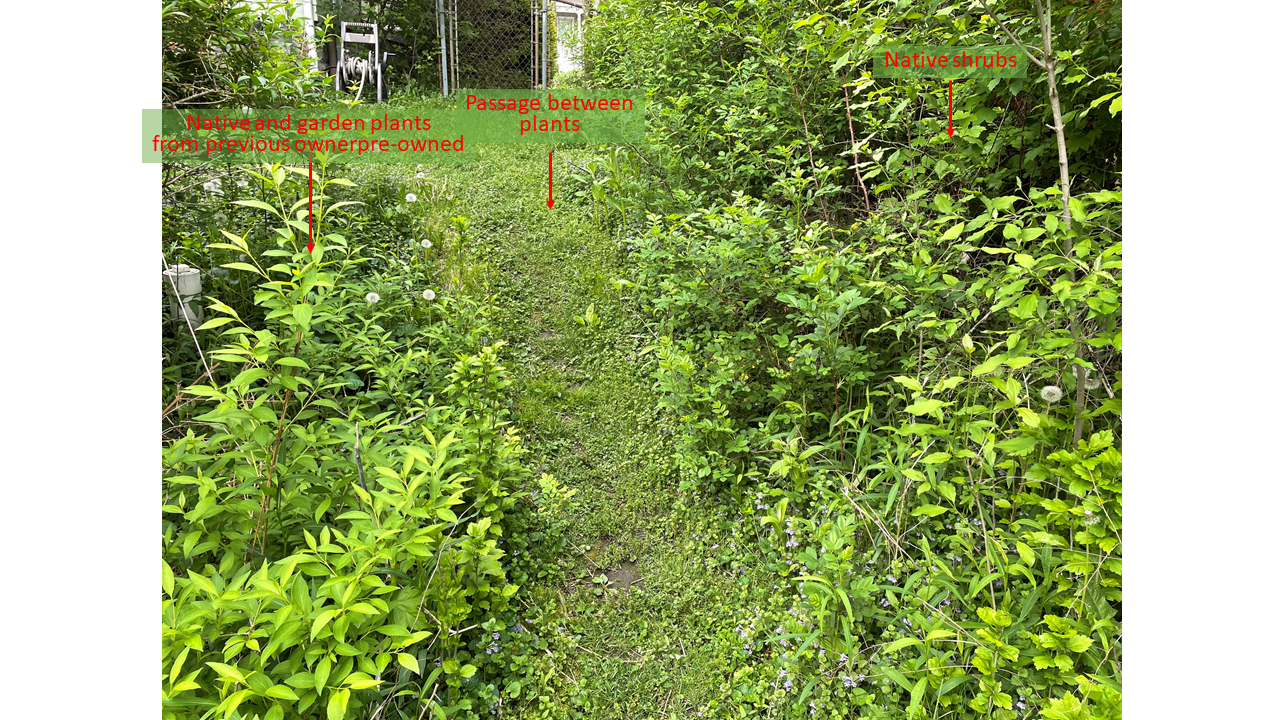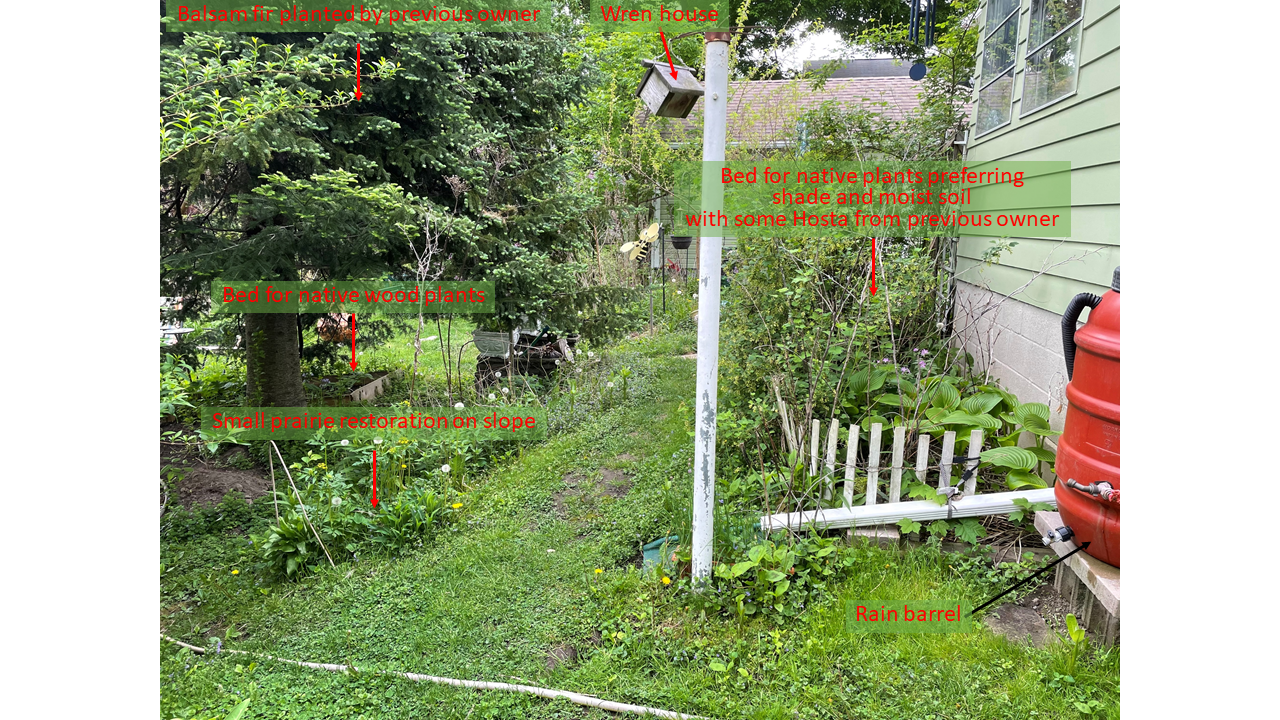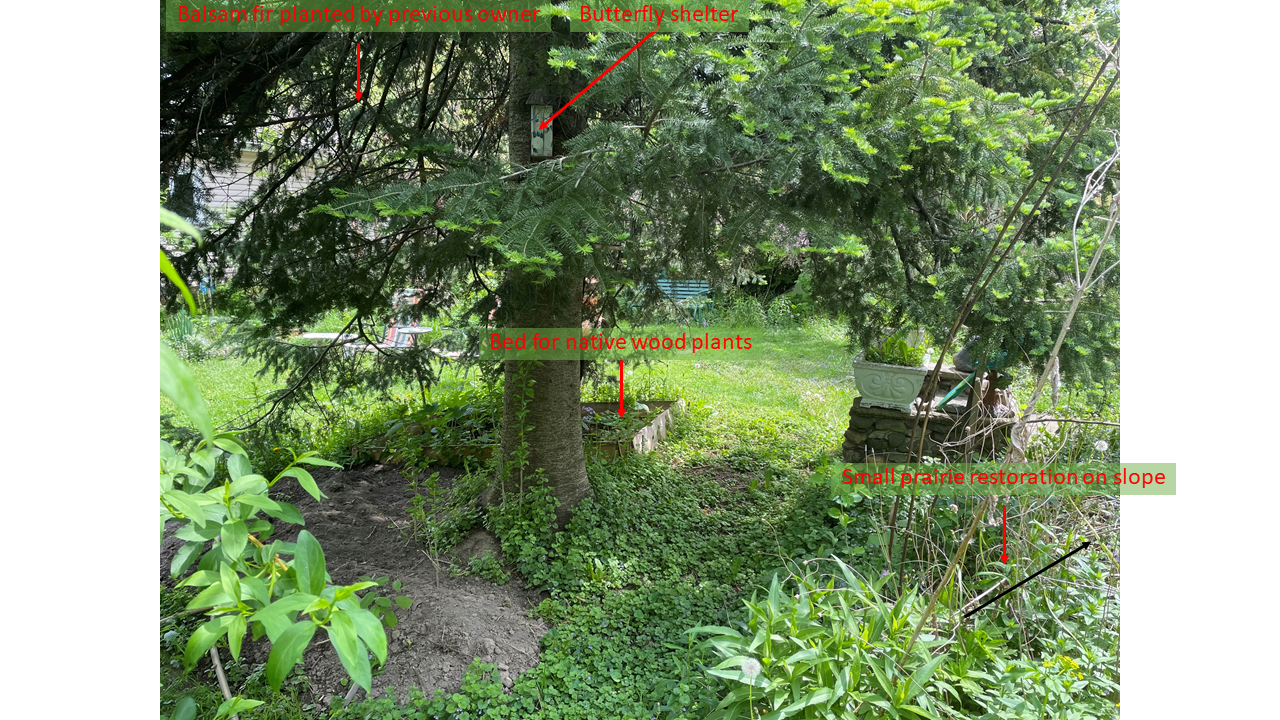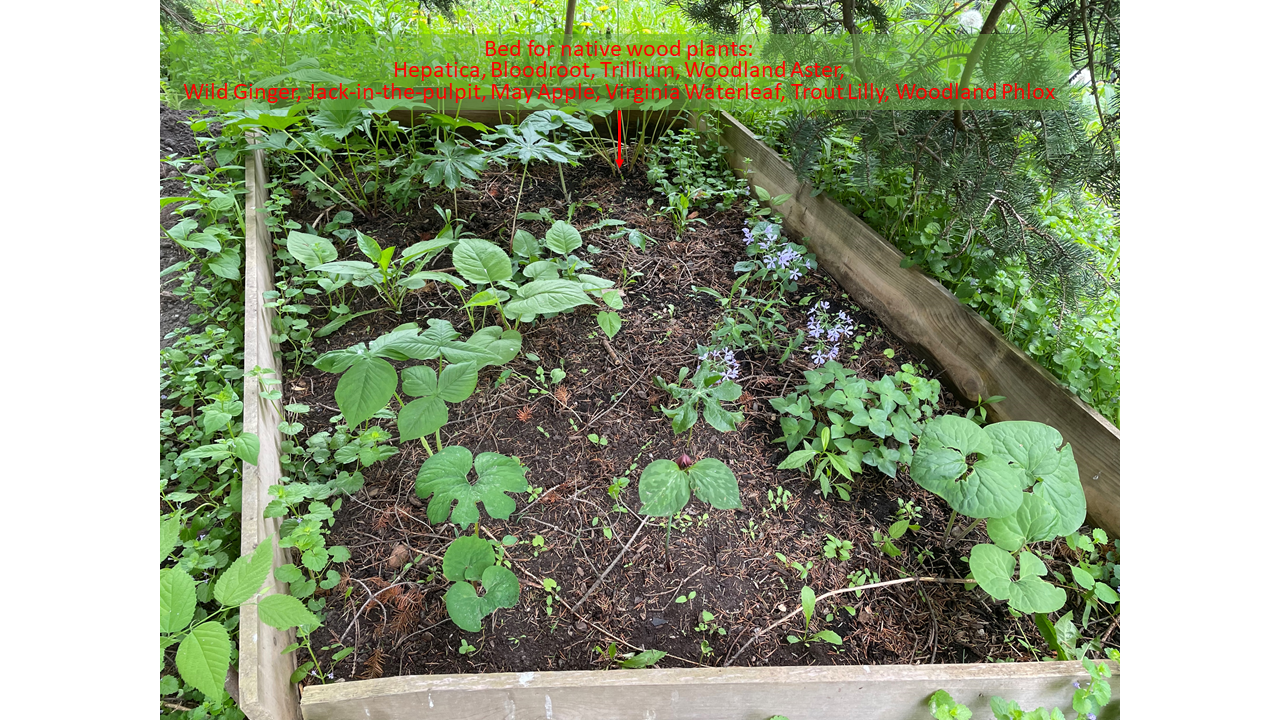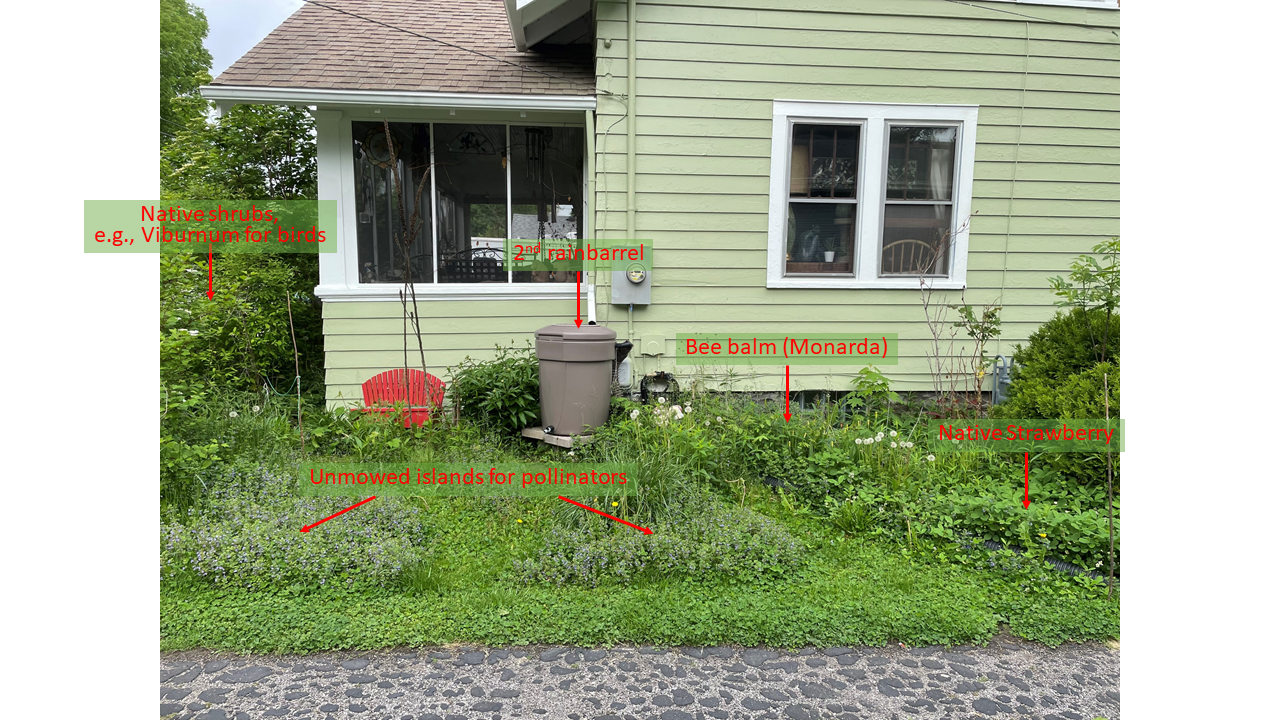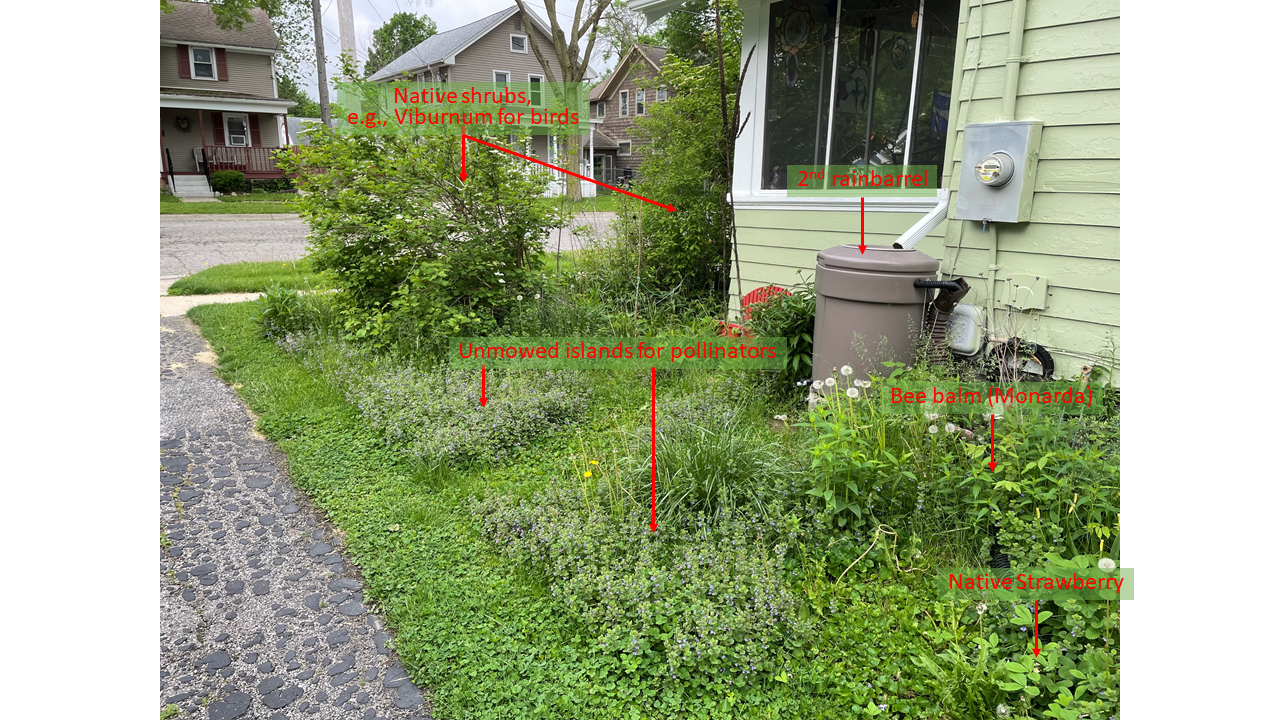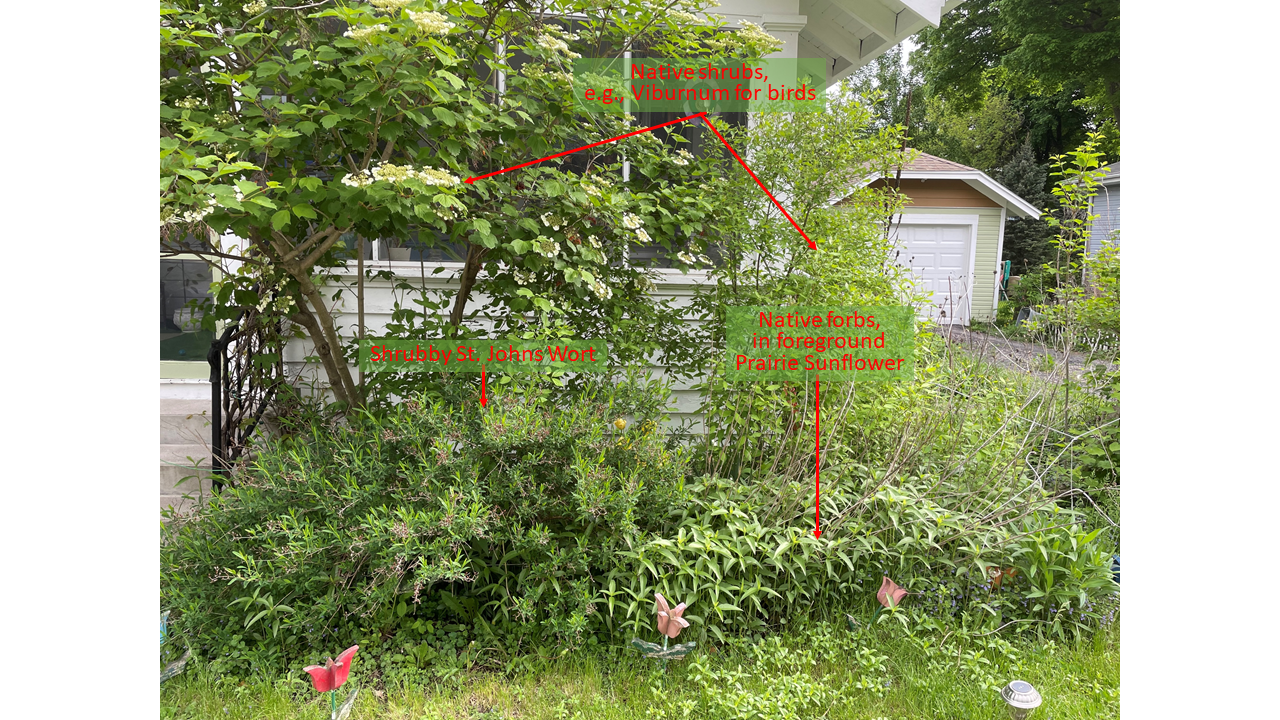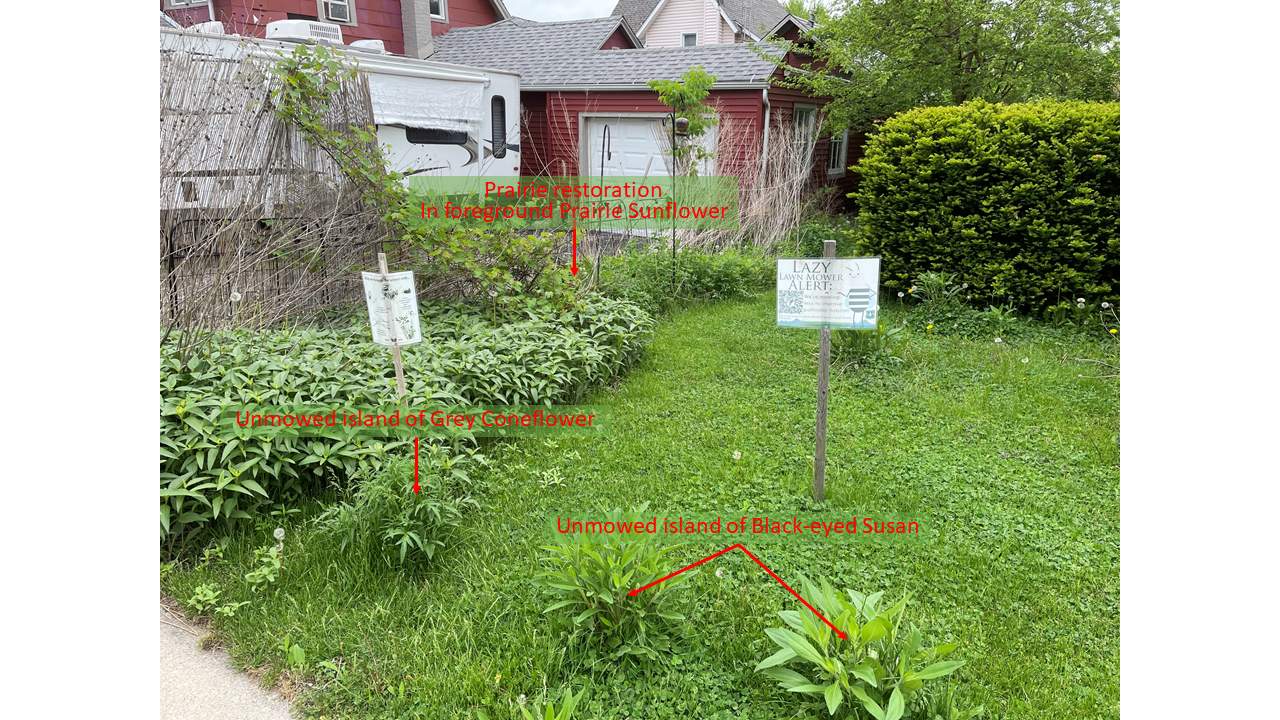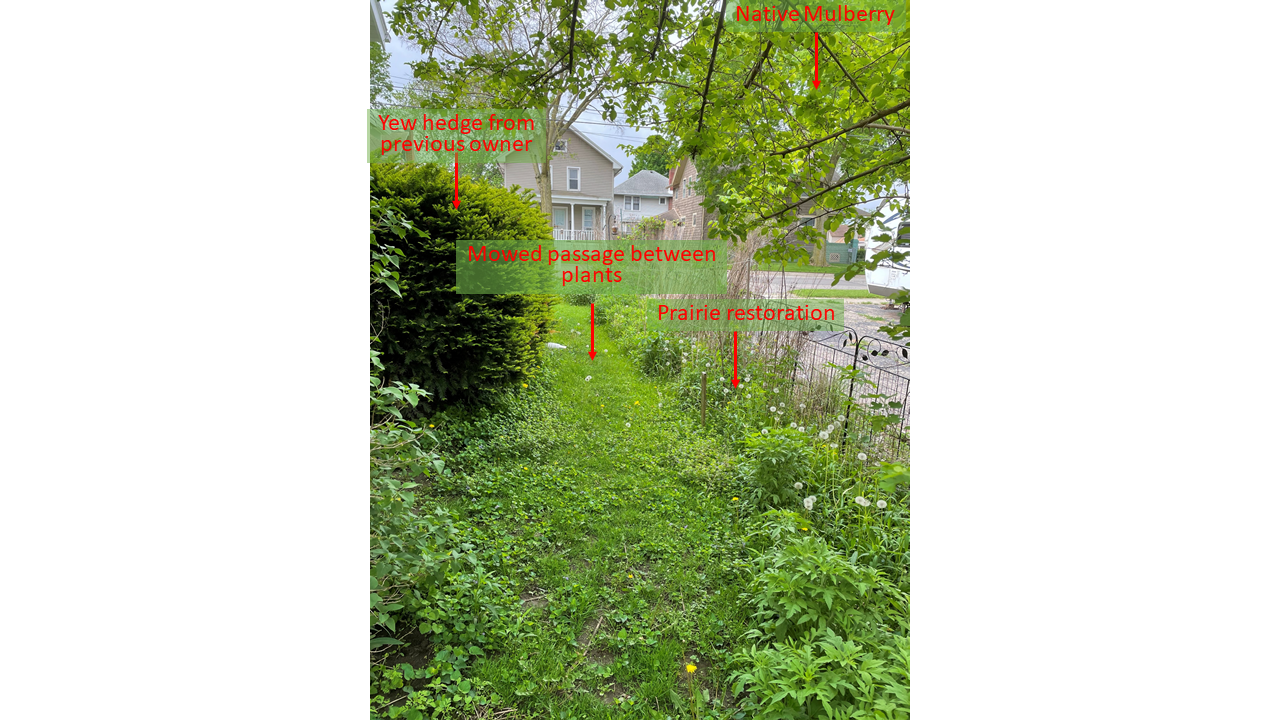Transform your Backyard into a Biodiversity Sanctuary
The transformation of a low diversity sterile backyard (first picture) to a backyard rich in insects, wildlife and birds and a productive permaculture garden took about 6 years as it was done in several easy and manageable steps:
- Establishments of the raised garden beds
- Building of the 3-bin compost and establishment of rain barrels
- Prairie restorations on the slopes, driveway and side yard
- Planting of native transplants into unmowed islands
- Changing mowing patterns to keep native plants that outseed into lawn and also keep non-native flowers frequented by pollinators
- Excavating the pond and planting of native water plants

